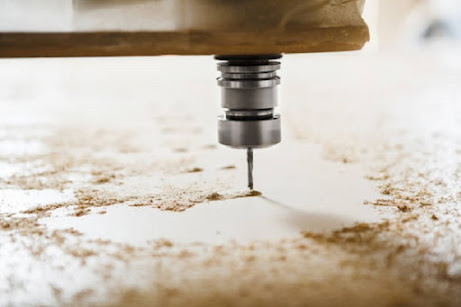Tips for Choosing The Right Router Bit For the Woodworking Job
If you need to do woodworking projects, you will know how difficult choosing bits can be. There are many options out there, and each one claims to provide quality results and ease of use. Some router bits have been around for decades, yet they continue to improve their design to keep up with the latest trends in router technology. That being said, if you want something that works well, lasts long, is durable, and produces high-quality cuts, you should consider using a plunge router bit. Here are five tips for choosing the right router bit for the job.
Tips for choosing the right router bit for the job
The router bit is probably one of the most useful tools in woodwork. Bits come in sizes ranging from 1/8 to 12 inches and have different shapes. You can use these bits to cut grooves, holes, decorative details, and even mortise-and-tenon joints. In order to get the best results possible, make sure you choose the right tool for the job. Here are some tips that can help you out.
Size And Type Of Router Bit
For small projects, you may want to stick with smaller-sized bits. When using larger pieces, they can become difficult to control and may damage your workpiece. Make sure to choose the correct size based on how big the project is. If you're making something that requires precision, it would be wise to avoid using a jigsaw.
A good way to find the proper size is to measure around the perimeter of the piece you wish to make. Then divide the number obtained by 8. That should give you a reasonable idea about the appropriate size. However, if you are working on a complicated project that involves cutting intricate designs, you might need a bigger bit. Try to test the material before starting any cuts. If it's weak, you might not be able to get away with using a great tool.
Use a Universal Bit Adapter
One of the reasons you should choose a universal bit adapter is that it makes it possible for you to switch between different sized bits without spending extra money on bits of varying sizes. Using a versatile bit adapter, you only have to purchase one set of bits instead of several sets of bits and adapters, depending on which size bit you're going to be using.
Look for Bits With High-Quality Material
When shopping for bits, look for ones that are made with higher quality materials compared to those made with lower grade materials. You can tell whether a bit is made with good craftsmanship simply by observing its appearance. For example, a good bit should have rounded edges and sharp corners, while a poorly built bit might have jagged edges and rough surfaces.
Choose a Bit Based On Its Warranty
A manufacturer's warranty is a great way to ensure you aren't wasting time and money trying to repair a faulty bit. When looking for a specific brand of bits, check the company's website to determine the length of their warranty. Most companies offer a lifetime guarantee on their bits, although some offer shorter warranties on parts that require frequent replacement.
Consider the Amount of Power Your Project Needs
You should never buy a router bit based on power alone. Instead, you should examine the amount of power your tool requires. For example, are you working on a small scale hobby project? Then you probably won't need much power. However, if you plan on doing heavy-duty work such as cutting plywood sheets or trimming down entire trees, you should invest in a powerful router.
What Makes A Good Router Bit?
In addition to choosing the right size and type of bit, you also need to choose the right shape. For example, round bits are great for shaping curves, whereas square bits are ideal for straight cuts. Your choice should depend on the shape that you plan on cutting. For example, round bits are perfect if you want to create a groove on a tabletop.
However, if you want to cut out a hole, a square bit will serve you better. Be aware of the difference between flat (or straight) bits and plunge bits. Flat bits are handy when making precise cuts along a line. Plunge bits are ideal for plunging holes throughout aboard. Both types of bits can be used interchangeably. When shopping for router bits, pay attention to the teeth count. It helps determine the type of cuts that you can make. You can always add more teeth later on.
Final Thoughts
Choosing the right router for the job is the first step toward successfully finishing the project. These tips should help you pick the right tool for the task.


Comments
Post a Comment